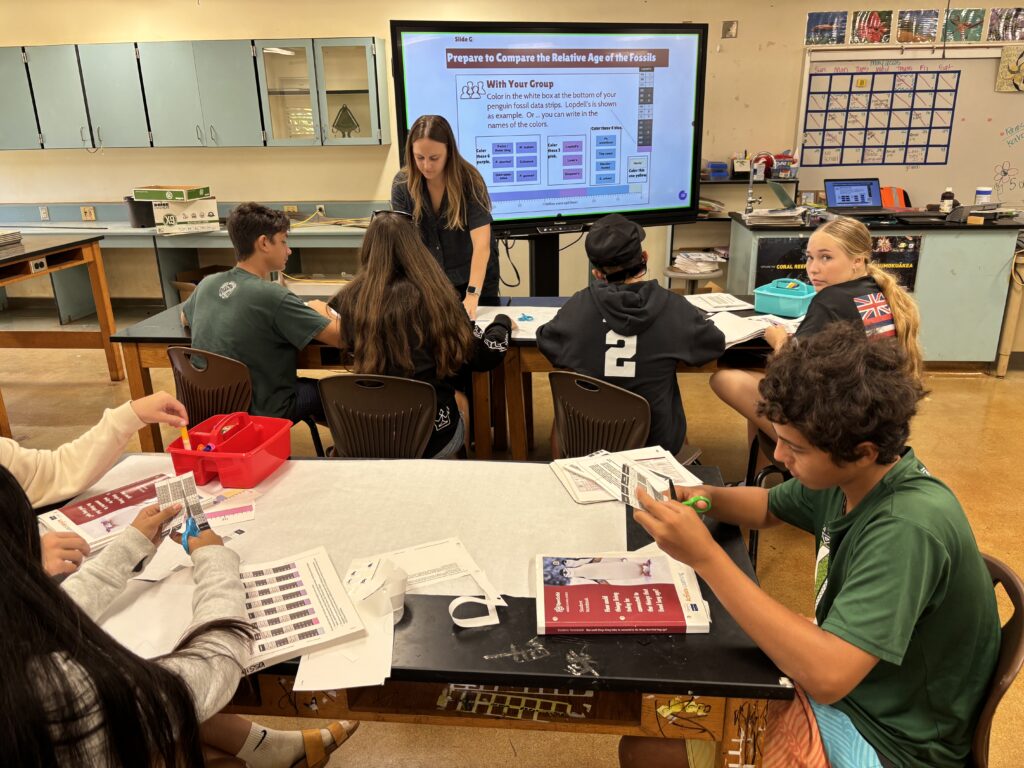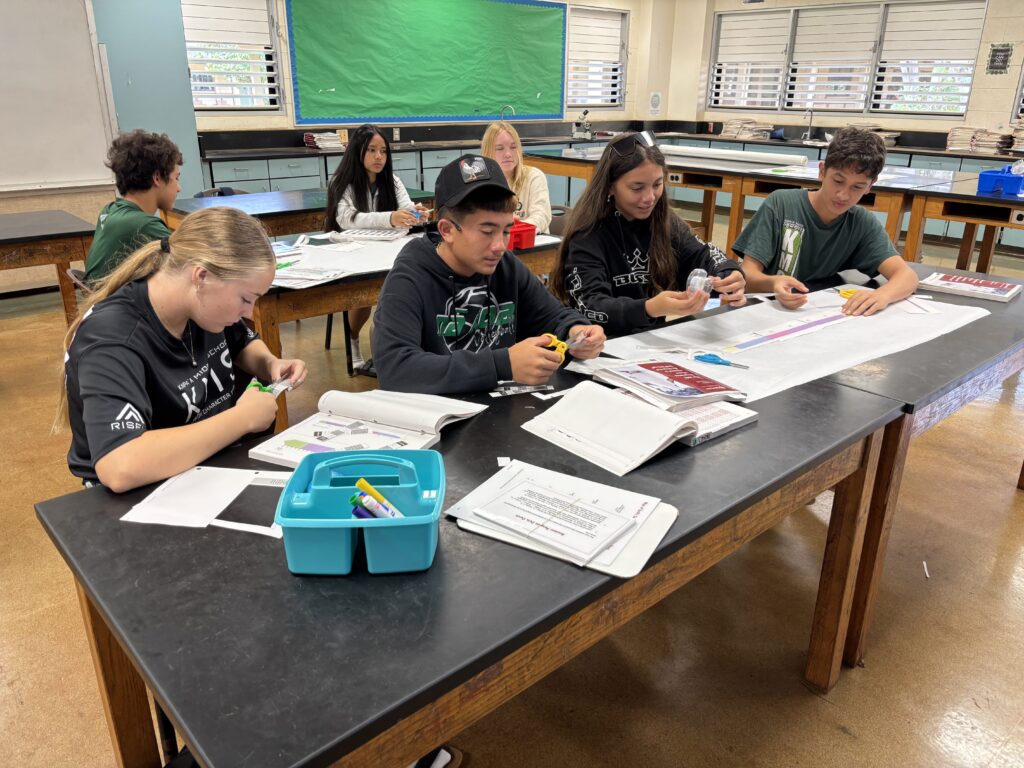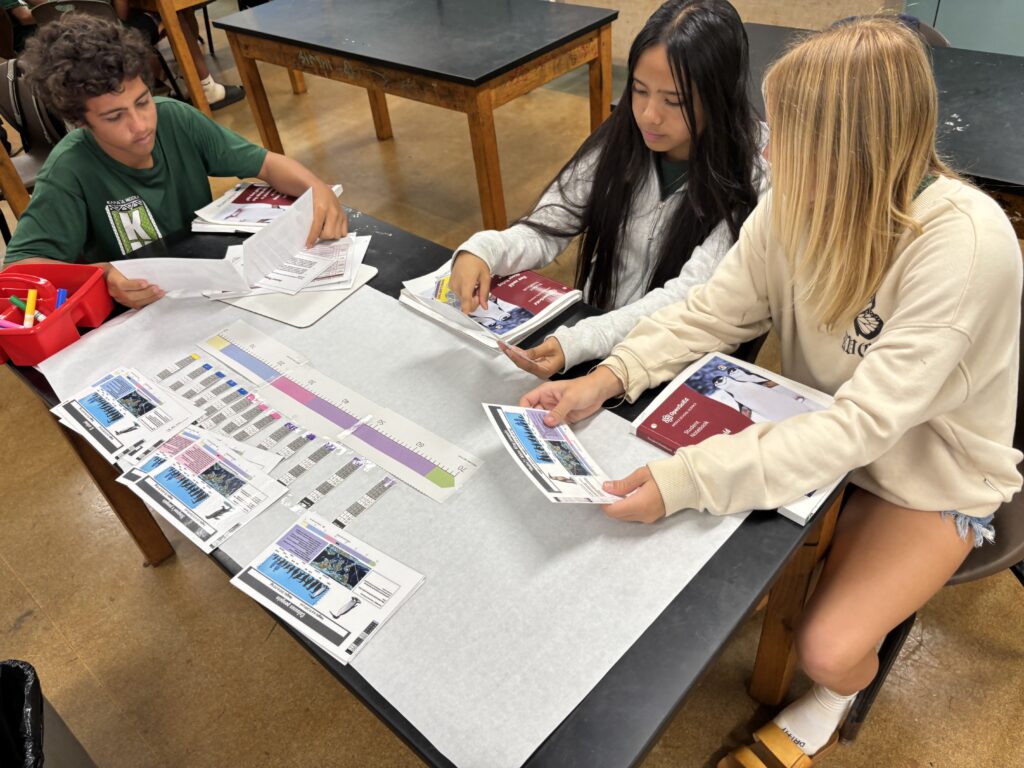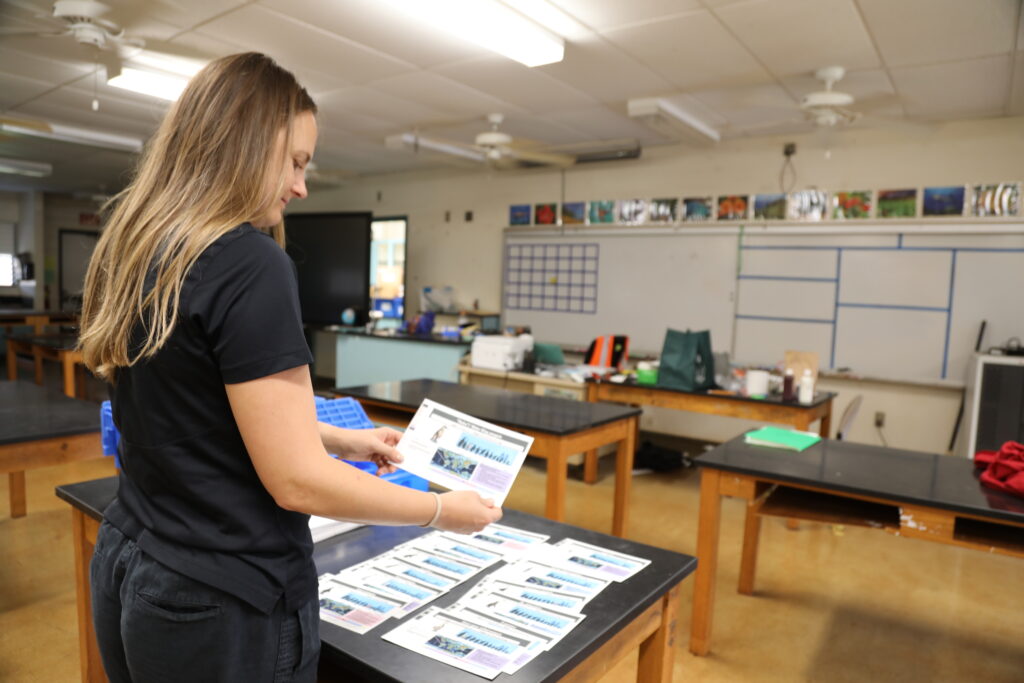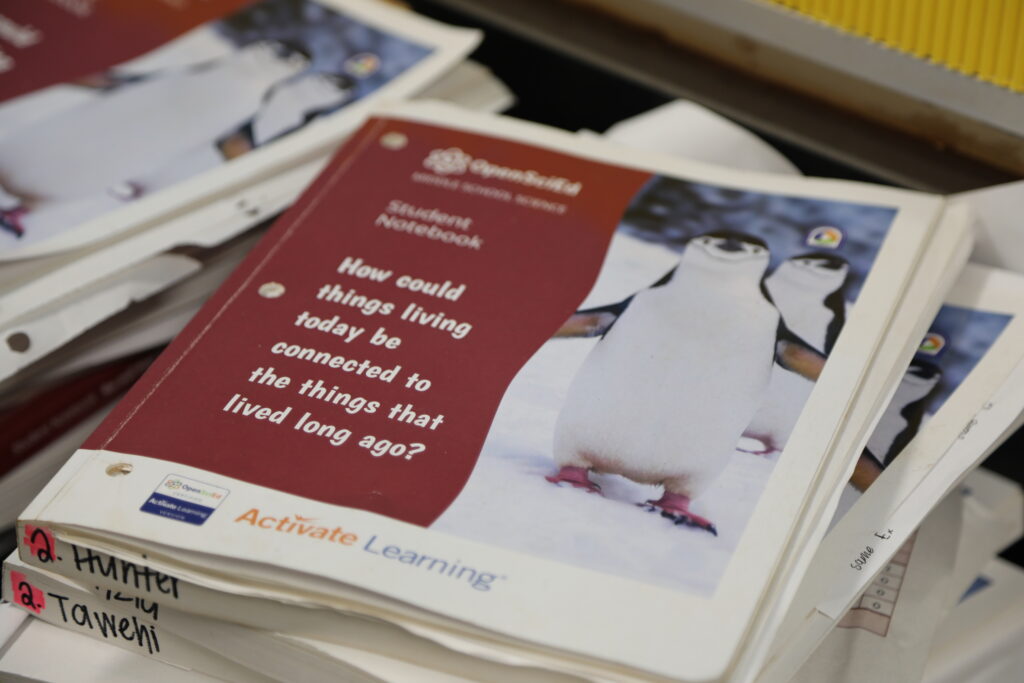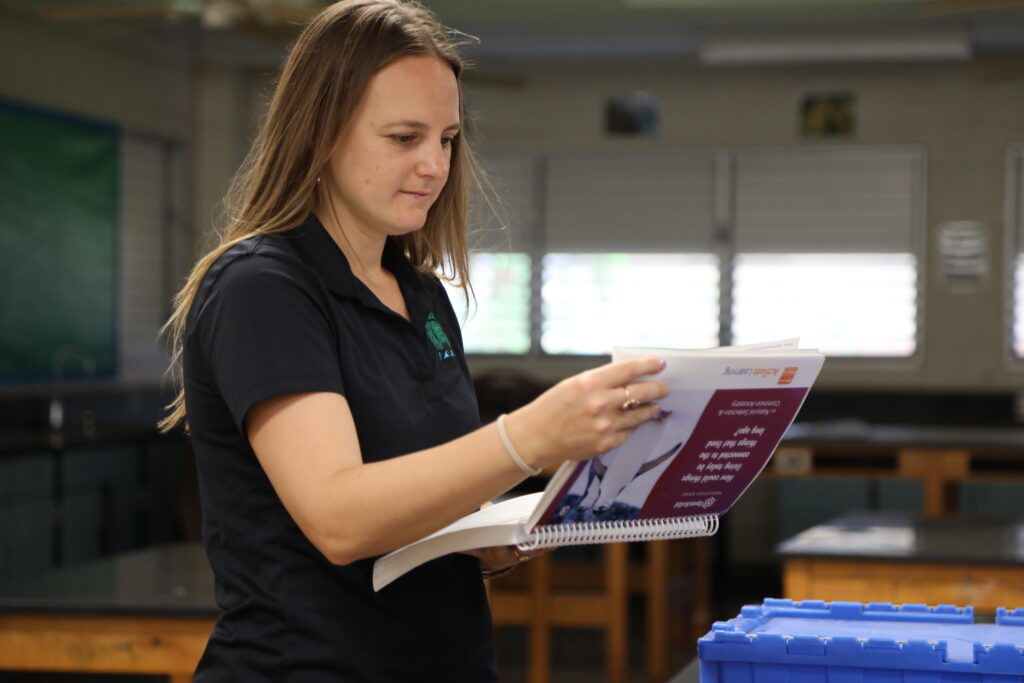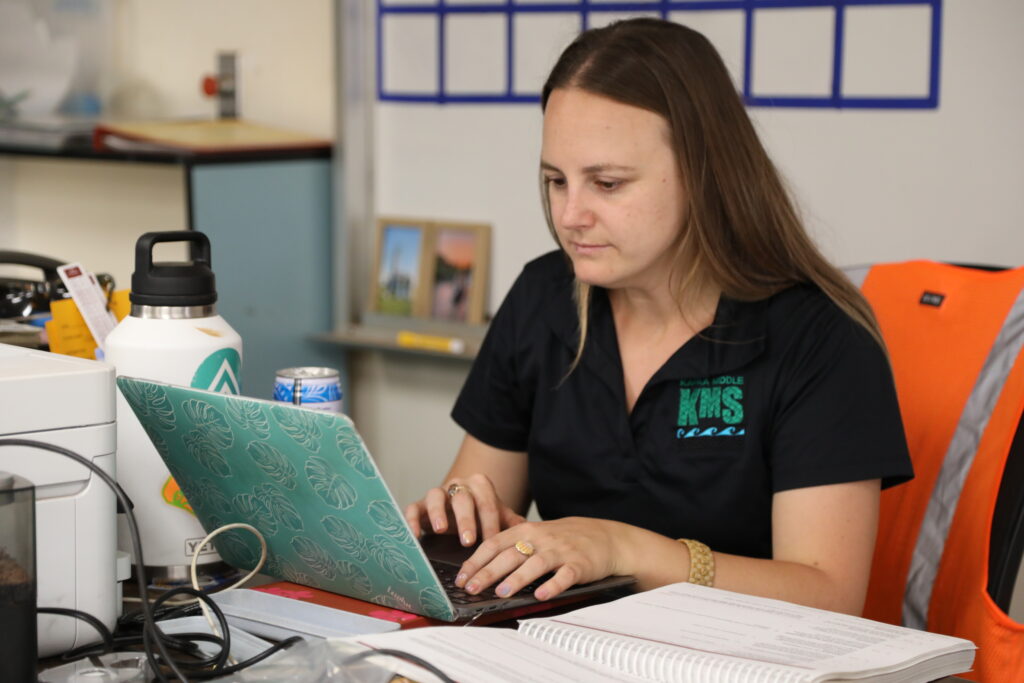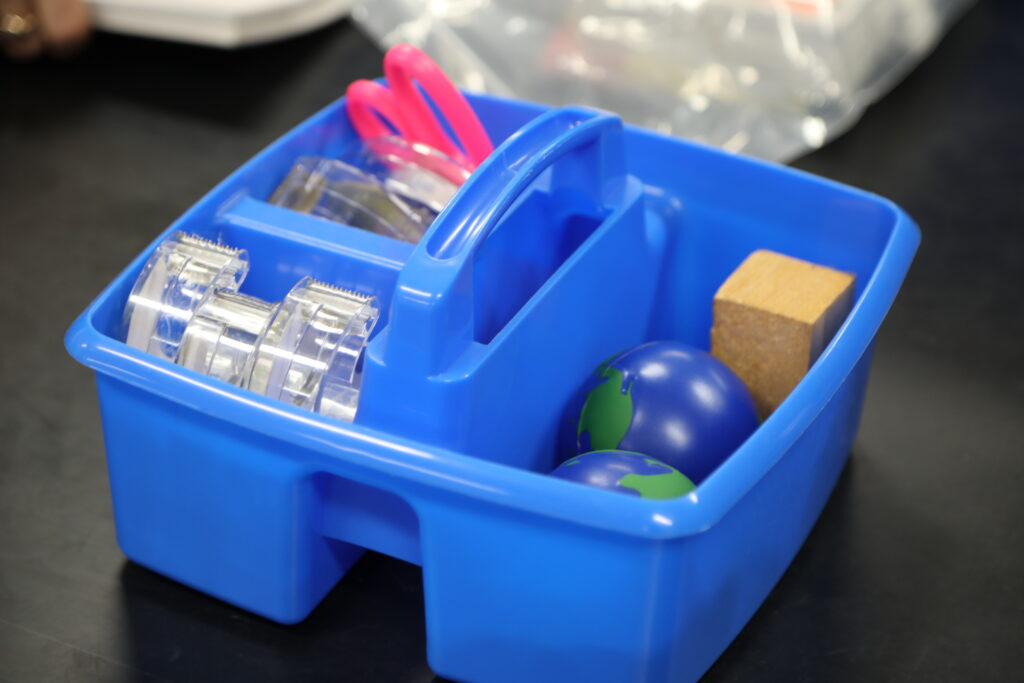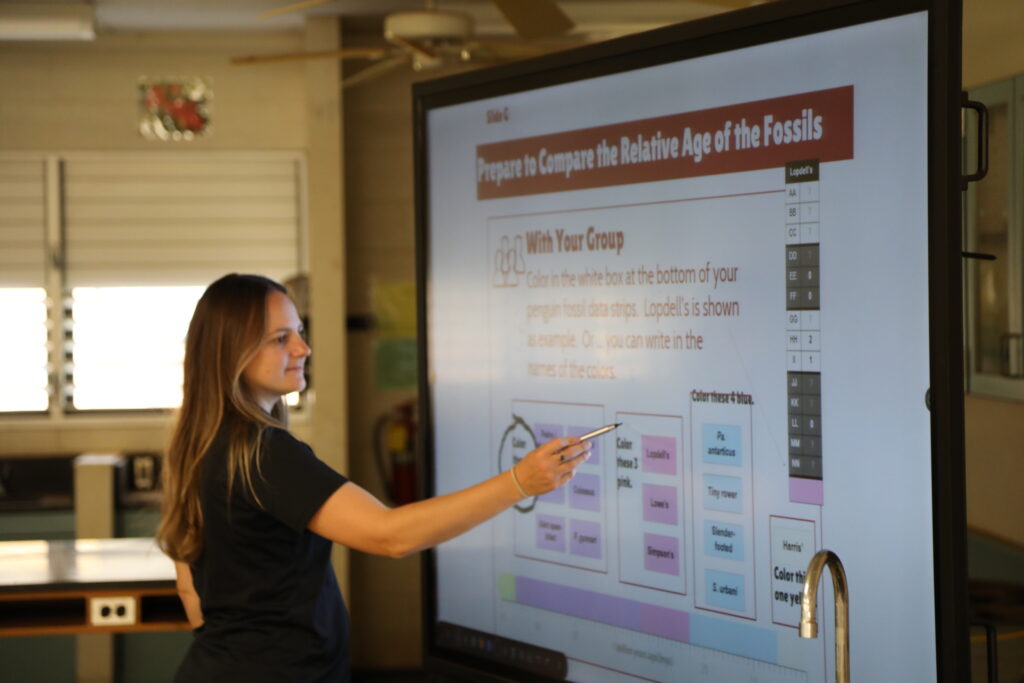.
.
OpenSciEd Meets Island Culture: How Activate Learning Powers Place-Based Education in Rural Hawaiian Schools
The Curriculum and Partnership That Helped Two Teachers Create Authentic Connections Between National Science Standards and Local Heritage
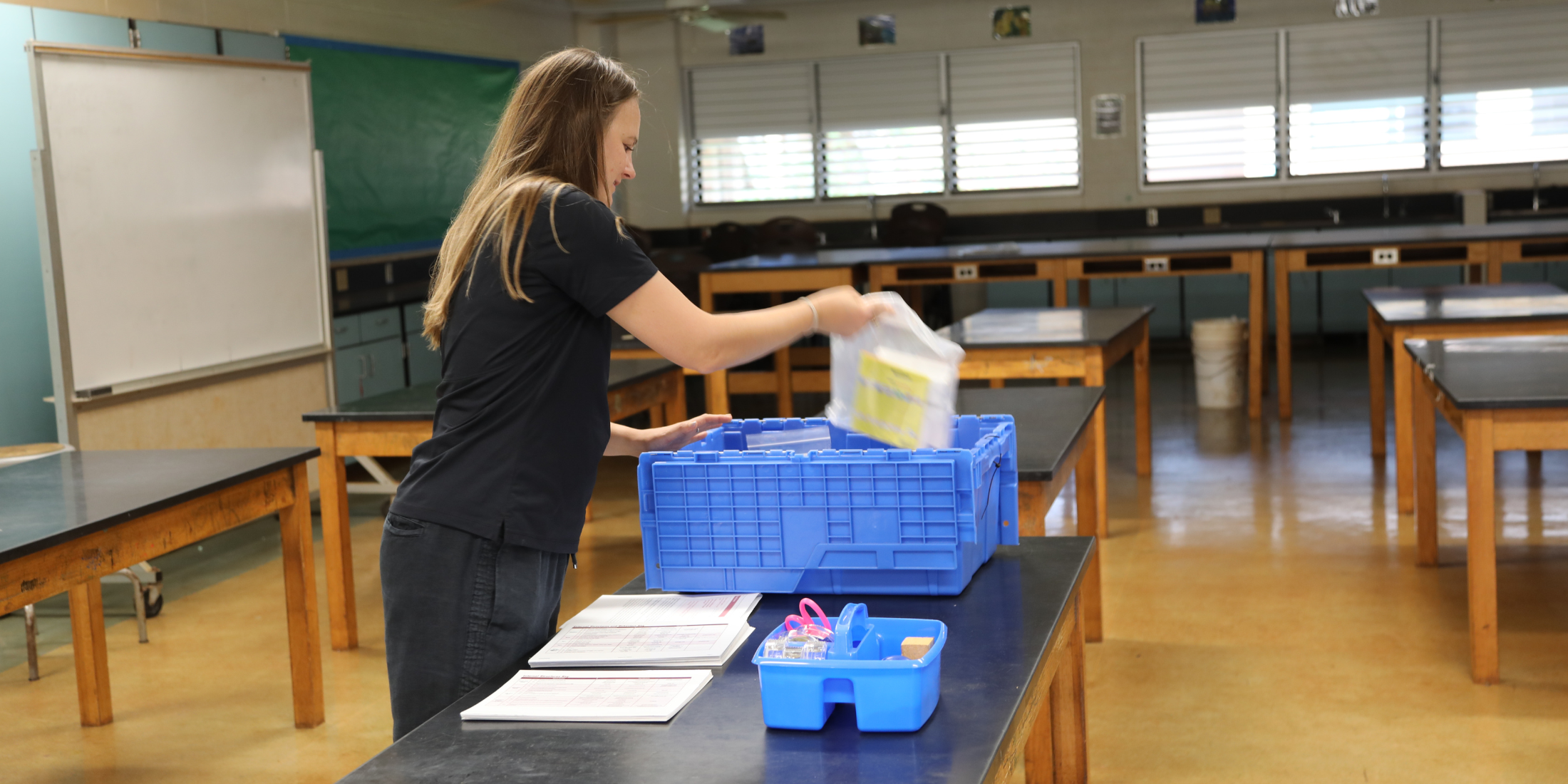
Melissa Wolfson, 8th grade lead science teacher at Kapaʻa Middle School, carefully packs up her Activate Learning OpenSciEd kit and materials for the summer break.
Reflections on a Breakthrough Year: OpenSciEd Success from Day One
It’s the last day of school at Kapa’a Middle School on the Hawaiian island of Kauai. The campus is quiet, and students are gone for summer break. In one of the science classrooms, Melissa Wolfson (8th grade lead science teacher) is carefully boxing up OpenSciEd science kits, stacks of student notebooks, and materials; the tools that sparked something new and exciting in her classroom this year: a sense of connection, curiosity, and authentic scientific discovery.
For Melissa and her colleagues, including Rachel Taylor (7th grade science teacher), this marked their first full year implementing a curriculum that truly embodies Hawaii's educational vision: preparing students who are "globally competitive and locally committed, deeply rooted in the values of our island home." Through Activate Learning's certified OpenSciEd curriculum, they discovered how an investigation-centered curriculum aligned with the Next Generation Science Standards (NGSS) could make rigorous science education both culturally meaningful and personally transformative for their students.
Kapa’a is one of three middle schools in Hawaii’s Kauai Complex Area, a rural school district that serves students across several small towns on the island of Kauai, one of the less populated Hawaiian Islands. With a population of just over 58,000 and a density of 94 people per square mile, Kauai is a place defined by physical distance but shaped by close-knit community ties.
Like many rural schools across the country, Kapa’a faces the challenges of geographic isolation, limited access to professional development, a small staff, limited resources, and the constant need to adapt urban-designed curricula to local contexts. Educators need flexible, high-quality curriculum options that work wherever learning happens and engage all learners.
Despite challenges, rural schools have distinct advantages: deep community connections, rich local environments, and opportunities for authentic place-based investigations that urban districts struggle to replicate. Hawaii's commitment to place-based education (an educational approach that connects learning to local culture, environment, and community) as a solution to these challenges runs deep. The state's Nā Hopena A'o framework, adopted in 2015 (one year before their adoption of NGSS), explicitly encourages schools to incorporate place-based and culturally responsive learning, transforming communities into “21st-century learning laboratories" where students become active stewards of their environment.
When Kapaʻa’s science teachers chose to adopt OpenSciEd and partner with Activate Learning (who provided comprehensive support, personalized professional learning, ready-to-use science kits, and a robust digital platform) they experienced a series of firsts: the first time they had a curriculum that truly addressed the needs of their rural students, the first time they received sustained support from a curriculum partner, and the first time they had all the tools required to succeed with innovative science instruction. As Melissa and Rachel reflect on a year that transformed their classroom instruction, their story reveals what’s possible when rural schools receive the support they deserve.
The Workshop That Changed Everything: How Three Teachers Chose Change Over Comfort
"OpenSciEd had what we were missing: more hands-on activities, more conversations, more science practices. We could actually see the potential." — Melissa Wolfson (8th Grade Lead Science Teacher)
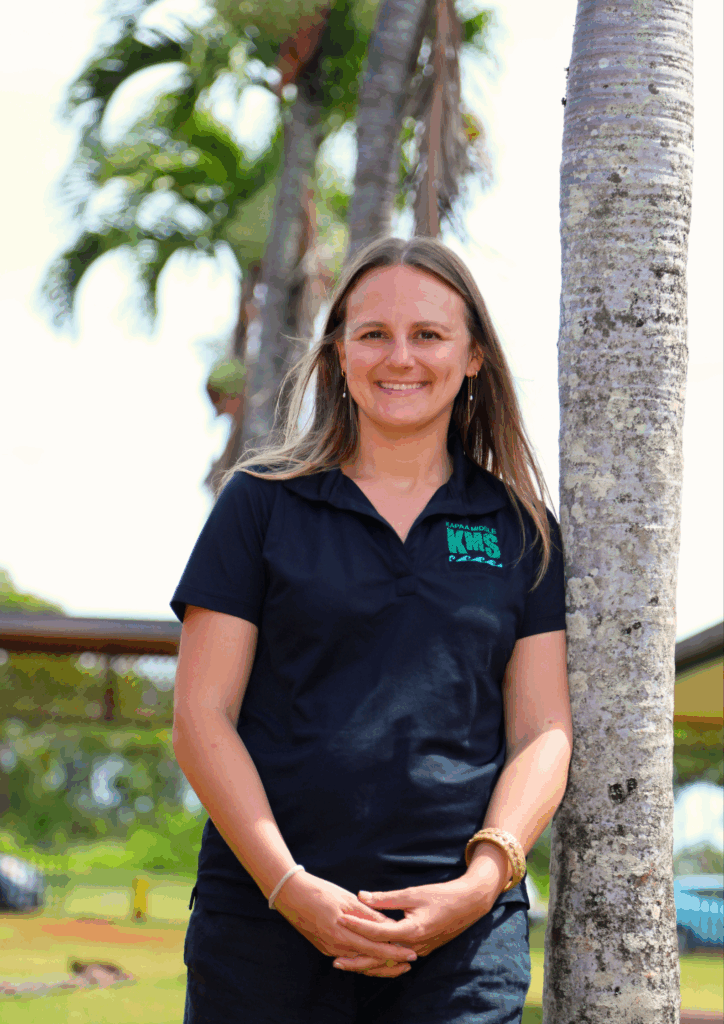
Melissa Wolfson, 8th Grade Lead Science Teacher
At the start of the 2023–2024 school year, the science team was comfortable with their program. They were using a familiar curriculum, had reliable routines, and weren’t actively looking for a change.
“I had no interest in switching curriculum,” Melissa recalls honestly. At the time, the science team felt confident in their direction. “We'd been using our curriculum for a couple of years,” she explains, “We were using Amplify Science. We did outside training through the district with Bozeman Science. We were comfortable. It worked.”
But when Melissa attended an OpenSciEd professional learning workshop hosted by Activate Learning, her perspective shifted significantly. “I went to the workshop, and afterward, I was like, ‘Wow!’”
That moment marked a powerful realization of what OpenSciEd could unlock for students and teachers at Kapaʻa. What followed was a thoughtful, teacher-led decision-making process -- a testiment to rural education at its best. While Kauai’s three middle schools aim for alignment, each retains the autonomy to choose what works best for its students.
Melissa returned from the workshop and invited her colleagues (Rachel and the 6th grade science teacher) to the next Activate Learning workshop to experience OpenSciEd for themselves. Together, they recognized the opportunity and potential challenges of switching from their current curriculum to the Activate Learning certified version of OpenSciEd. “OpenSciEd had what we were missing,” explains Melissa, “more hands-on activities, more conversations, more science practices. We could actually see the potential!” The decision was clear and unanimous. With the support of their district administrator, Melissa and her team chose OpenSciEd. "It's going to be really, really hard to change curriculum,” Melissa told them, “But I think we should do it!”
For Rachel, the appeal centered on how OpenSciEd made the NGSS easy to navigate and teachable. Having coached colleagues through Hawaii’s NGSS transition, she understood the complexity of the standards. "When you first look at the standards,” she notes, “it's very overwhelming. You don't know where to begin or how things connect." OpenSciEd was a game-changer. "The curriculum breaks everything down,” Rachel explains. “Each unit begins with: ‘Here’s where we’re going. Here’s the standard we’re hitting. Here’s what we’re doing today.’ I’m no longer staring at my computer, wondering if I’m hitting the right standard. It’s all there, and it works!"
As they prepared for implementation in the 2023–2024 school year, Melissa and Rachel were excited to begin, but they also wondered whether they could teach OpenSciEd with confidence. The stage was set for a year of discovery that would surpass even their most hopeful expectations.
Now, the real work began.
Confidence from Day One: The Power of Personalized Professional Learning
"I did feel like I was drowning at the beginning of the year because everything was new and different. But once I got that first quarter of the school year done with and the first unit was done, I thought to myself, 'I can do this. This is good!'" — Rachel Taylor (7th Grade Science Teacher)
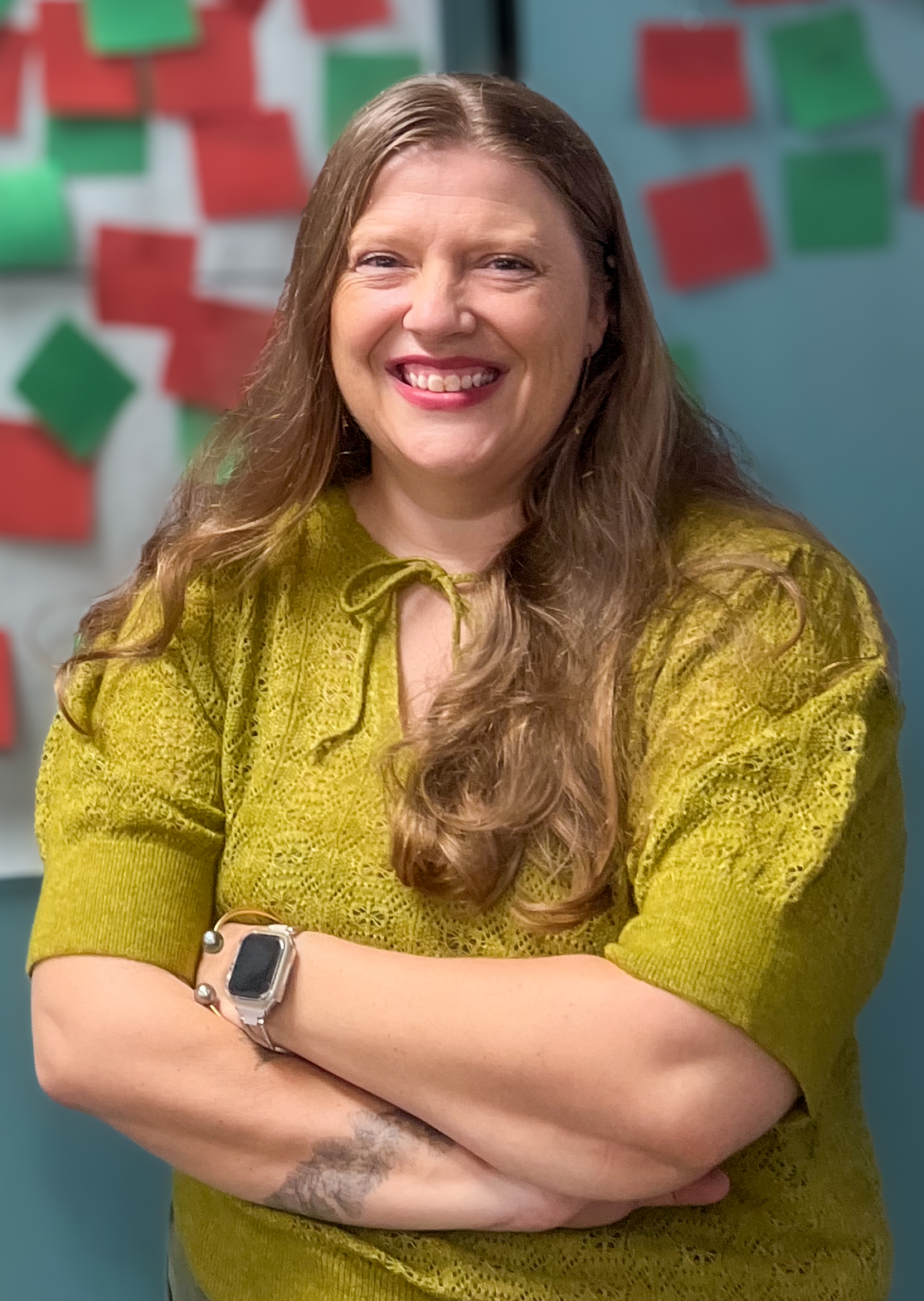
Rachel Taylor, 7th Grade Science Teacher
Recent research from Digital Promise indicates that educators adopting OpenSciEd must make "profound shifts in pedagogy," requiring sustained professional learning and strong administrative support to succeed. District leaders surveyed consistently cited this transition and the need for ongoing teacher support as one of the greatest barriers to successful OpenSciEd adoption.
Activate Learning’s approach to professional learning is built on interactive sensemaking experiences that align with research-based standards and are tailored to the district’s needs. From collaborative planning sessions between schools across the island to one-on-one curriculum unpacking and real-time email support, the Activate Learning team didn’t deliver one-size-fits-all training; they provided hands-on, personalized guidance that empowered teachers to implement OpenSciEd successfully from the very first day.
"I think the most beneficial training I went to was the first one I went to," Melissa explains. "We went through the first couple of lessons of a unit as if we were the students. We sat and did our Notice and Wonder chart. We did our Driving Question Boards and our consensus model as students." This experiential approach, where teachers role-play as learners, creates an authentic understanding of how investigation-centered pedagogy works in practice.
The impact was immediate. That’s when everything clicked for Melissa: "Seeing it from a student perspective made me feel like, 'Okay, I'm ready to give this a try with my own class,'" she reflects. Rather than leaving educators to independently decode complex pedagogical shifts, Activate Learning’s experiential methodology developed confidence in Kapa’a teachers, which translated to classroom success the first year of implementation. "Every time after training, we always felt we were way more prepared to take this on," Melissa notes, describing how sustained professional learning built collective capacity across their small rural team.
For Rachel, a former elementary teacher with limited science experience, Activate Learning’s support helped her sidestep the common struggles of first-year curriculum implementation. While the scope of OpenSciEd initially overwhelmed her, she quickly found her footing. “I did feel like I was drowning at the beginning of the year just because everything was new and different,” she recalls. “But once I got that first quarter of the school year done and the first unit was done, I thought to myself, ‘I can do this. This is good!’”
Another powerful element of Activate Learning’s professional learning was its ability to foster collaboration across schools and districts, a rare and deeply valued quality in a rural setting like Kauai. Melissa noted that, unlike previous experiences where facilitators stuck rigidly to a fixed plan, Activate Learning’s team prioritized what teachers actually needed: time to learn from each other.
“Our district was able to put on professional learning time for all three middle schools to come together,” Melissa shared. “The Activate Learning facilitator always allowed us time to work together across schools. I was able to sit with 8th grade teachers from different campuses and just talk: what's working, what's not, how can we help each other, how can we adapt this unit? That wasn’t even part of the original workshop plan for the day, but the facilitator saw how valuable that time was for us and made space for it.”
By prioritizing these teacher-driven conversations and ongoing collaboration, Activate Learning fostered an environment where educators across Kauai could share strategies, build lasting professional networks, and confidently lead change together, laying the foundation for a highly successful first year with OpenSciEd.
OpenSciEd in Action: How Investigation-Centered Science Brings Place-Based Learning to
Life at Kapa’a
"To me, place-based learning is connecting classroom learning to the day-to-day lives of me, of the students, of everybody. We live in a really unique place out here on Kauai. We teach science, and we live in the middle of the ocean. So talking about that in general has so much connection to everything we've learned."
— Rachel Taylor (7th Grade Science Teacher)
On an island where community ties run deep and environmental stewardship is a shared responsibility, connecting classroom learning to local culture, history, and the natural world is critical for student engagement and success.
Hawaii's commitment to place-based education found its perfect match in OpenSciEd's flexible, three-dimensional design. Rather than forcing cultural connections onto abstract lessons, the curriculum's phenomena-based approach naturally invites students to explore science through their personal island experiences and cocreate learning experiences that are deeply personal.
For Melissa and Rachel, OpenSciEd was the first curriculum that made it easy and exciting for students to see themselves, their families, and their island reflected in what they were learning.
"To me, place-based learning is connecting classroom learning to the day-to-day lives of me, of the students, of everybody, connecting it to where they live," Melissa explains. "We live in a really unique place out here on Kauai, especially. It's super small. We teach science, and we live in the middle of the ocean. So just talking about that in general has so much connection to everything we learned."
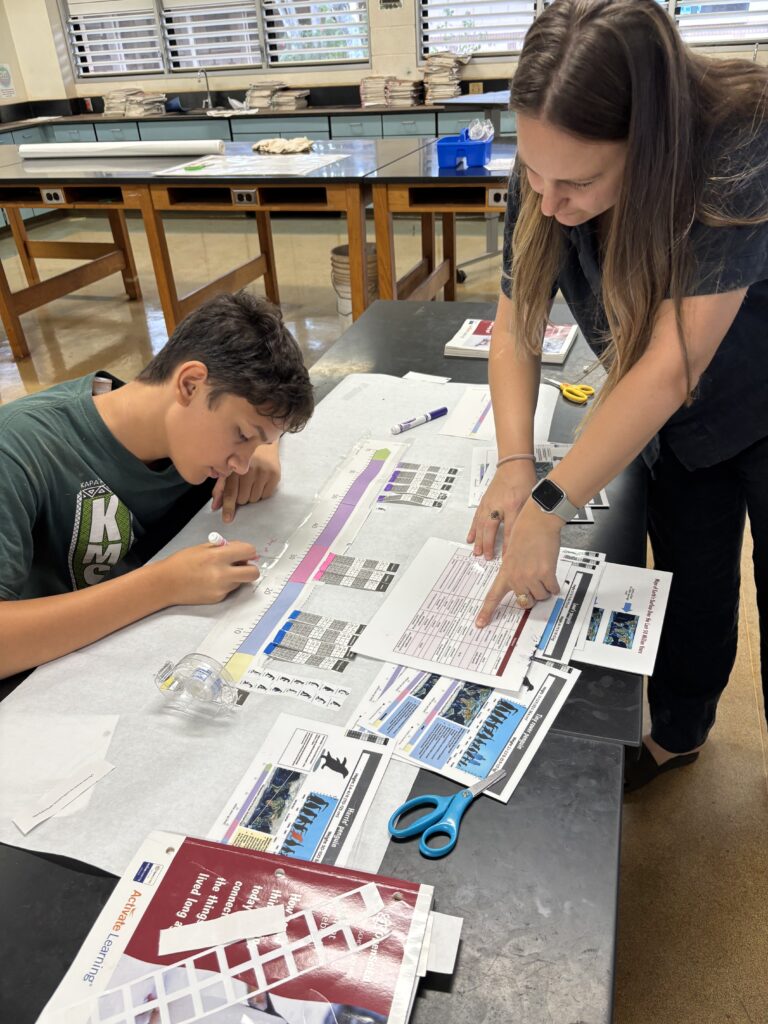
Melissa guiding students through an OpenSciEd exercise.
Through OpenSciEd, students develop both environmental awareness and scientific thinking; essential skills for understanding and protecting their world. Melissa adds, "I think the parts of the curriculum that tell the students to make connections, literally think of connections outside of the classroom and how it connects to what you just watched, what you just did, is so helpful!"
As a non-native Hawaiian, Melissa also values the opportunity to learn about the environment and culture alongside her students. “My favorite thing is to learn from them,” she says. “They’ll share with me how it connects to their lives, and I always learn something new.”
Student Engagement Through Authentic Inquiry
Both teachers experienced their own transformation, moving from delivering information to being learning facilitators and helping students take the lead in their own learning. The transformation in student engagement has been remarkable.
"Success to me is every student participating because I've had kids sit in my classroom and do nothing in the past. This year I've had that very minimally," Melissa reflects. The key difference lay in OpenSciEd's emphasis on student-generated questions rather than teacher-directed answers.
In Rachel’s classroom, the Driving Question Board, one of OpenSciEd's core routines, was a breakthrough. “It took a while, but once my students got used to it, their questions kept getting better,” Rachel says. “By the last unit, they were coming up with focused questions on their own.” That mindset shift boosted engagement and sparked genuine scientific thinking. "They're taking that data down, and they don't even realize what they're doing. They’re being scientists. They're conducting experiments," Rachel observes.
This shift required patience and pedagogical courage. “At first it was rough for them,” Rachel recalls. “They would ask, ‘But why aren’t you just telling us the answer?’” Her response to them embodies the essence of investigation-centered learning: "I need YOU to do the work, and I need YOU to ask the questions. I need YOU to find the information."
This approach extended to moments when Rachel herself didn't know the answers—something Activate Learning's professional development had prepared her to handle confidently. “One student asked me a question, and I said, ‘I don’t know,’” Rachel recalls. “He said, ‘Miss, you’re the teacher, you should know the answer!’ And I told him, ‘Why would I? Let’s look it up and figure it out together.” This intellectual humility created an opportunity for collaborative discovery that strengthened their classroom culture.
Through OpenSciEd's place-based flexibility, Melissa and Rachel discovered that rigorous science education and cultural responsiveness aren't competing priorities—they're complementary approaches that create more meaningful, engaging, and effective learning for all students.
Making It Real: OpenSciEd Units Through an Island Lens
Unit 7.3: Metabolic Reactions
7th Grade
Personal health experiences created authentic learning opportunities when a student recognized her mother's celiac disease symptoms in the curriculum scenario. This led to meaningful discussions about dietary restrictions in Hawaii's rice-centered culture versus mainland bread consumption, making abstract metabolic concepts personally relevant and empowering students to share their personal experiences. "Drawing the models on this unit was really fun," recalls Rachel. "One of our goals this year was to teach students how to draw and understand different models in different ways."
Unit 7.5: Ecosystem Dynamics
7th Grade
Rachel's nature walks around campus became lessons in environmental and cultural history. Students explored how human development impacts natural ecosystems, leading to discussions about native versus non-native plants and Hawaii's plantation era. "They had family members who lived on the plantations, and they understood that whole culture of change and what happened," Rachel explains, connecting ecosystem science to their family histories.
Unit 8.2: Sound Waves
8th Grade
A curriculum video showing truck sound systems immediately resonated with students' lived experiences. "Out here, my students can't drive yet, but when they do start to drive, they put the sound systems in their trucks, and they put them as loud as they possibly can. And they loved that," Melissa recalls. This cultural connection transformed physics concepts from abstract formulas into personally relevant investigations. This unit was a favorite of Melissa's and her students.
Unit 8.6: Natural Selection & Common Ancestry
8th Grade
What began as studying penguin adaptations evolved into investigating Hawaii's critically endangered native forest birds. "We take all that we learned in natural selection and are like, 'Well, let's look at what is here,'" Melissa explains. Students explored how island ancestors adapted to different environments, then connected this learning to current conservation needs: "What can we do? Why is it important to protect them?" This local application helped students understand their role as environmental stewards while mastering evolutionary concepts.
For rural educators implementing NGSS-aligned science curricula, materials can make or break the learning experience. While OpenSciEd's three-dimensional approach promises transformative learning, it requires hands-on investigations that depend on specialized equipment, organized supplies, and resources that support authentic scientific practices for students and streamlined preparation for teachers. Without comprehensive materials support, even the most committed teachers can find themselves spending countless hours sourcing supplies instead of facilitating learning.
At Kapaʻa, Activate Learning's science kits and workbooks turned what could have been a logistical nightmare into a seamless implementation success.
All-In-One Science Kits
Melissa and Rachel credit Activate Learning’s pre-packaged science kits and materials with making their first year of OpenSciEd possible.
"Someone buying me a kit and everything's in there and I don't have to go source it at Safeway or Walmart. Yes! It made my life so much easier," Rachel explains with obvious relief. For rural teachers accustomed to hunting for materials across limited local suppliers, or doing without, the comprehensive kits eliminated a major implementation barrier.
Each kit arrives organized by lesson, with materials neatly bagged and ready for immediate use. "The kit is delivered to us. It's easy," Rachel notes. "The list and everything are in there. And it comes with the cylinders and everything I need." This systematic organization is crucial for busy rural teachers managing multiple preparations without the support staff that larger districts might provide.
The impact extends beyond convenience to educational quality. "The kits are so great," Melissa emphasizes. "We used the kits and the workbooks and the teacher guides. It has everything you need to get started and get into doing science as soon as possible." Rather than compromising investigations due to missing materials, teachers can focus entirely on facilitating student discovery and supporting authentic scientific practices.
Why Teachers and Students Love Activate Learning’s Workbooks
While the science kits are essential for hands-on investigations, both Melissa and Rachel agreed on another unexpected game-changer: the student workbooks. In an era dominated by digital tools, the option of using Activate Learning’s physical workbooks gave their classrooms a refreshing and highly effective shift back to paper.
Melissa strongly prefers the physical workbooks over digital platforms, especially after seeing how screen fatigue impacted her students during and after remote learning. “I one thousand percent prefer the physical workbooks over having kids on computers,” she says firmly. “Once we had the workbooks, it was so much easier to go around the classroom and see exactly where students were. They liked being able to write, to physically flip pages, to draw, to scribble things out.”
Beyond ease of use, Melissa noticed that the act of handwriting deepened her students' learning (a choice supported by research on handwriting and learning retention). “It’s like we’re going back in time, bringing back the paper,” she says. “But writing it down sticks in their brains more.”
Rachel had a similar revelation. "I love the workbooks. They're lifesaving," Rachel declares emphatically. After initially trying to substitute science notebooks, she quickly realized the difference: "I don't have to print it. I don't have to cut it down to a cute little size to fit into the composition book. We're not gluing anything. That's huge for me, because that takes time."
In a rural school where every minute counts and internet access isn’t always guaranteed, having flexible options like physical workbooks and a digital platform lets teachers choose what works best for their classrooms. At Kapaʻa, the answer was clear: fewer screens, more writing, and a lot more learning. Explains Melissa, “I think the students have enjoyed getting off the computer, being able to write and having something that they can feel.”
Year-One Success with OpenSciEd: How Comprehensive Support Enables Rural Excellence
As Melissa finishes packing away her science kits and student notebooks, she reflects on what truly helped make this school year successful for her and her students. It wasn’t just the OpenSciEd curriculum. It was the partnership. When Kaua‘i Complex Schools partnered with Activate Learning, they didn’t just adopt an innovative program; they gained the kind of responsive, hands-on support that makes profound change possible. For Melissa, that support was crucial and exceptional.
"Everybody that I've spoken to at Activate Learning has been more than helpful," Melissa reflects. "We used a different curriculum before OpenSciEd, and getting in touch with people with that curriculum was challenging. I never knew who I was talking to. People wouldn't return my messages, or I'd get bumped around." The contrast with Activate Learning couldn't be starker: "I feel like I know everybody's name and I know a little bit about everybody that I've spoken to and worked with. You guys respond to emails right away!"
This responsive, personal partnership became the foundation for everything that followed. When budget constraints arose, Activate Learning collaborated to find practical solutions. When teachers needed confidence-building professional learning, facilitators prioritized authentic, hands-on experiences over rigid agendas. And when rural logistics posed sourcing challenges, comprehensive science kits removed barriers that could have stalled even the most determined classrooms.
Most importantly, this comprehensive approach enabled authentic place-based learning to flourish. When students investigated Hawaiian forest birds through concepts of natural selection, explored their plantation heritage through ecosystem studies, or connected local truck culture to physics principles, they weren't just meeting national science standards—they were discovering their role as stewards and scholars of their unique island home.
For Melissa and Rachel, this year represented a series of educational firsts: the first time they'd experienced a curriculum that truly served their rural students' needs, the first time they'd received such comprehensive implementation support, and the first time they'd been empowered to create authentic connections between rigorous science education and the rich cultural heritage of their community.
Rachel sums it up: " Students are working together, doing partner pairing, reading, highlighting, taking data, running simulations, creating graphs, drawing models, and running through experiments. They're doing a lot, and they don't even realize it. OpenSciEd hits everything. Not all curricula do that.”
As they prepare for their second year with OpenSciEd, Melissa, Rachel, and their students are starting from a place of confidence, curiosity, and connection. Science is no longer distant or abstract, it’s the tool they use to understand and care for the world around them. And in rural Hawaii, where neʻepapa (the value of coming together with shared purpose) shapes community life, Kapaʻa Middle School has shown that with the right support, rural schools don’t just adapt to innovative science education. They flourish; nurturing graduates who are both globally ready and deeply rooted in their local heritage.
For rural districts everywhere, Kapaʻa’s story is a reminder that meaningful change isn’t just possible, it’s achievable. Through thoughtful partnerships, hands-on learning, and respect for local identity, schools can transform the challenge of rural implementation into a source of strength for students, their communities, and the wider world they’ll shape.
Ready to create your district's science success story? Partner with Activate Learning
Just as Melissa and Rachel transformed implementation barriers into breakthrough results through comprehensive support and strategic partnership, your district can overcome the research-validated challenges facing OpenSciEd adoption. Contact Activate Learning today to discover how our all-in-one solution can turn your science education transformation from struggle to success story: one teacher, one classroom, and one authentic learning experience at a time.
